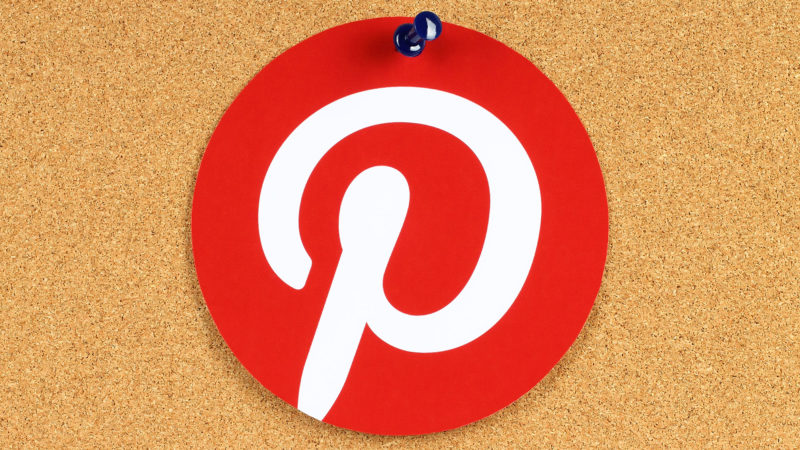Intro to Pinterest ads: From setup to success story
Contributor Akvile DeFazio explains how to set up a Pinterest business account, discover the available advertising features and accomplish your goals using effective tactics.
While Pinterest has been around since 2010, it still is a vastly underutilized advertising channel for many brands. While the wedding and food industry have been naturally thriving on Pinterest, you may be surprised that you can find success using Pinterest Ads even if your brand resides outside of those two categories.
Pinterest users are on the lookout for ideas, inspiration and, indirectly, your relevantly targeted products and services that can help improve their lives. Expand your business efforts into Pinterest and discover advertising opportunities that can result in a positive return.
Getting started
To begin, create a business account or convert your existing personal profile into a business account. When setting up a business account, Pinterest will automatically create an ad account for you.
From here, you will have the option to create additional ad accounts and can assign other business profiles to work on your account. To create additional Pinterest accounts, you’ll need to set up new business profiles with different billing details for each.
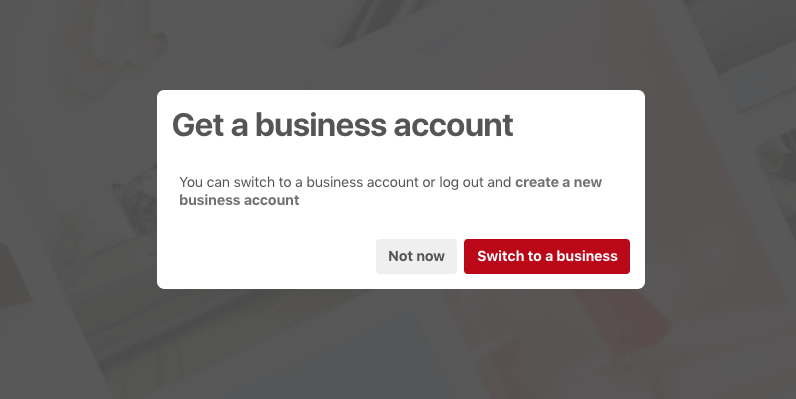
Pinterest tag implementation
Similar to other advertising channels, Pinterest has its own Tag, which is a piece of code that is applied to your website. With the Tag, you will be able to better measure the effectiveness of your campaigns, understand customer paths from engagements to conversions, define audiences for remarketing and track a number of events such as page visits, category views, searches, cart additions, checkouts, video views, signups and leads.
To install the Tag, place the base code on all pages on your website, and then add event tags to any page on which you want to track conversions. For further details on tag implementation, Pinterest’s developer center contains helpful guides that you may find beneficial.
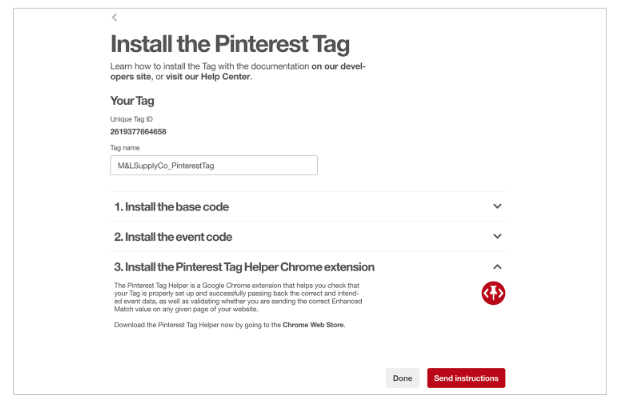
Goals
Pinterest offers two types of campaign objectives: awareness and consideration. Awareness campaigns are a good way to introduce people to your brand, as they are aimed at bringing new potential customers into your funnel.
Consideration campaigns are effective vehicles to reach warmer audiences to entice them to visit your website or app and make a product or service purchase or to download an app if they haven’t already.
Ad types
At this time, there are four ad formats available in Pinterest business ad accounts.
Promoted Pins
Promoted Pins are Pinterest’s standard ads. They can support a variety of marketing goals, such as increasing awareness, engagement and website traffic.
One of the many benefits of having a business account is that you can create private boards that are not publicly visible to Pinterest users, and with these, you can compose Pins that you later deploy as part of a campaign. (If you are unable to locate a Pin that you want to promote, be sure to check if it’s in a secret board, as Pins can only be promoted from public or protected boards.)
Like most organic pins, Promoted Pins have a two-click click-through process, as seen in the Winc wine delivery service example ad below. (I have no business relationship with Winc or any of the other advertisers I’ll mention here.)
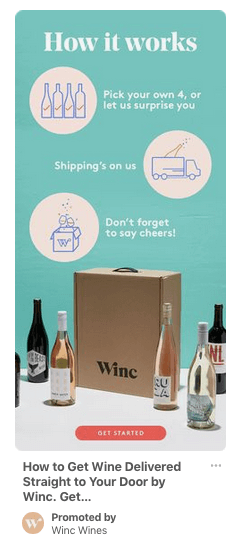
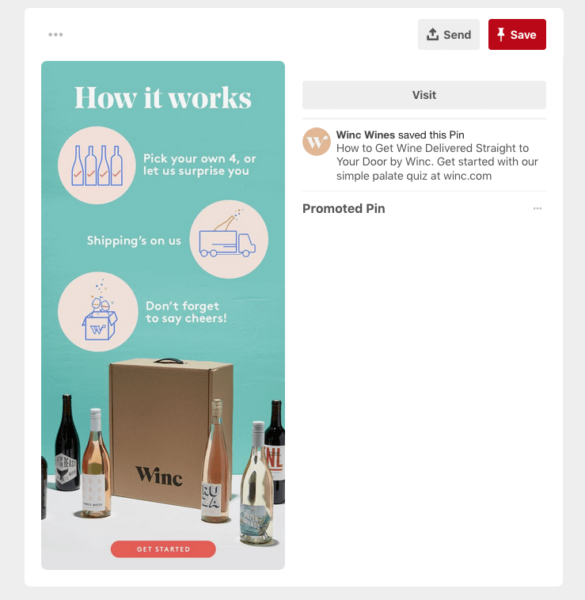
This ad is a well-designed pin that looks natural in Pinterest’s feed, though it reaches better-targeted audiences.
Once you click on the pin displayed on top, above, it shows the preview screen displayed below the image of the pin, which features more of the ad copy, inviting users to take a quiz.
It’s a creative way to do lead generation using Pinterest Ads, which can be later repurposed in email drip campaigns, Pinterest remarketing campaigns or other advertising channels.
Promoted Video Pins
One of the challenges advertisers face is standing out in a sea of pins. One approach is to use autoplay videos on Pinterest for a more captivating and immersive experience for your potential customers.
With consideration campaigns, video ads tend to have higher CTR and conversion rates, as they leave less to the imagination and allow users to better visualize your products or services — thus increasing your conversion volume and lowering cost per acquisition.
While video ads are successful creatives in consideration campaigns, they also frequently have higher engagement rates in awareness campaigns. Creating movement with your ads helps you better capture people’s attention as they browse through pins.
Promoted Video Pins are currently only available in the United States, the United Kingdom, Ireland, Canada and Australia.
Pinterest Video Pin specs are as follows:
- File type: MP4 or MOV, and H.264 encoded.
- Max size: 2GB or less.
- Length: Minimum is 4 seconds, maximum is 30 minutes. We recommend videos that are 10 to 20 seconds long.
- Aspect ratio: Square (1:1); Vertical (9:16).
- Resolution: Min 240 PPI.
- Frame rate: Minimum 25 FPS.
This Promoted Video Pin ad example was instantly attention-grabbing, as it features a woman moving into various yoga poses for a yoga-related fitness app. Subtle motion carries great power in moving metrics.
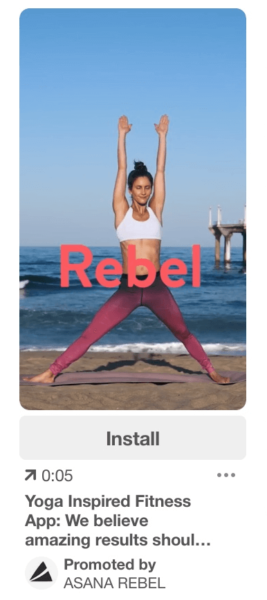
One-tap Promoted Pins
As you may have personally experienced, most Pins require two clicks or “taps” to count as a click-through to a website. With One-tap Promoted Pins, you can get people to your website much more quickly, just as the name indicates.
With these, expect to see higher CTRs; however, be sure that your ad-to-landing-page experience and messaging is seamless, or the influx of more clicks can also lead to higher bounce rates and wasted budget. For a better rate of success, test One-tap Promoted Pins with warmer audiences so that they are more likely to convert after they click through.
In the following example, SmugMug effectively advertises on camera-related keyword searches, showcasing their photography services. Simple, relevant, well-targeted and easy to understand.

In addition, they have a strong call to action, urging people to “Start your free trial today,” which goes straight to their landing page rather than the second preview Pinterest screen. Use this placement option to get straight to the point, but make sure don’t give your audience a reason to bounce.
Promoted App Pins
Looking to increase awareness and downloads of your app? This ad format is effective in doing both with a simple click of a button to “Install” within the ad unit. Users don’t have to leave Pinterest, making this an effective and seamless experience, resulting in a win for both your campaign objective and the users’ experience on Pinterest.
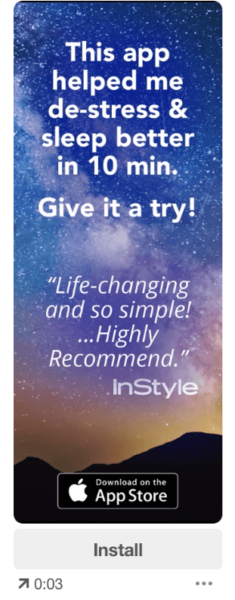
Strategies for success
Stand out, naturally
Create ads that inspire, are relevant and look natural to the platform and your brand. According to Pinterest, “73% of Pinners say that content from brands makes Pinterest more useful.”
Walmart does an excellent job with their colorful, aesthetically pleasing, stylish ads, as they appear natural in the feed, as seen in the following example in the middle. These inspiring ads — featuring, in this case, clothing appropriate for the season — are excellent in driving product sales.

Repurpose successful organic pins
Already have something that works? Expand its shelf life by using your highest engagement organic pins and promote them using one of the aforementioned ad formats to expand your reach, traffic and conversions.
Remarketing for conversions
Entice your newsletter subscribers, website visitors, cart abandoners and leads to return to your site and complete the conversion with remarketing campaigns.
Test different messaging, images and videos with these warmer audiences, and if you have an offer, this is the time to present it, such as in this Joybird furniture example below. As a past website visitor of theirs, I was immediately drawn to this ad because of brand familiarity and the holiday promotion.

Include a call to action in Pin descriptions
Regardless of ad format, use a strong call to action in your Promoted Pin description, especially if you are doing One-tap Pins.
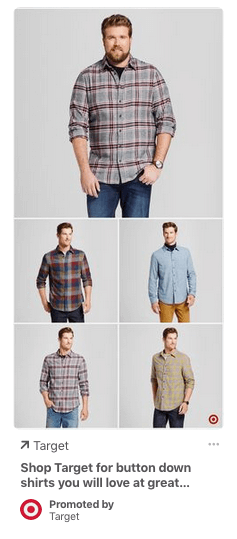
Forego hashtags
While Pinterest supports hashtags, they can appear slightly spammy, as they don’t appear on Pinterest as often as they do on other more hashtag-friendly social channels such as Instagram or Twitter.
Use relevant keywords in your Promoted Pin description, as it will appear much more organic and welcoming.
Desktop vs. mobile
Eighty percent of users access Pinterest via tablet or smartphone. While desktop use is only a fraction of that, don’t disregard it quite yet, as it could be an underutilized opportunity. When browsing Pinterest, users will typically see more ads on mobile than on desktop, so take advantage of the comparably less saturated advertising environment to see how desktop ads perform with your target audience.
To save time, run separate mobile and desktop campaigns to better understand performance. If you determine that one type isn’t worthwhile to run long-term, you’ll be able to easily disable one or the other.
Now that you’re familiar with setup, your advertising options, and tactics to improve your chances of success, dive in and promote some Pins, because according to Pinterest, 61 percent of Pinners make purchases after seeing a brand’s content on Pinterest. With that percentage, it’s worth a test, wouldn’t you say?
Contributing authors are invited to create content for MarTech and are chosen for their expertise and contribution to the martech community. Our contributors work under the oversight of the editorial staff and contributions are checked for quality and relevance to our readers. MarTech is owned by Semrush. Contributor was not asked to make any direct or indirect mentions of Semrush. The opinions they express are their own.
Related stories
New on MarTech
